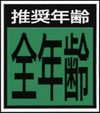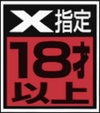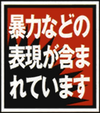SEGA Rating
From Sega Retro
Sega used to use its own age ratings for games released for its systems in Japan. The ratings were used for late Mega Drive games, late Game Gear games, late Mega-CD games, the entire 32X library, most Sega Saturn games, multiple Dreamcast games, and some of Sega's PC games.
The system was presumably optional, with publishers such as Acclaim, Capcom and Konami opting not to use it in many of their releases.
| Icon | Description |
|---|---|

|
Zen Nenrei (推奨年齢 全年齢): The game's contents are considered acceptable for all ages. Most games rated by Sega fall under this designation, as the company was seemingly more interested in pointing out which games were designed for adults, rather than making a distinction between children and teenagers. As a result of this, some games may contain low levels of violence or suggestive themes, but nothing concerning. Dreamcast games with this rating would display it on the back of the box as opposed to the front.
This rating was initially coloured blue, but changed to green in May 1995. |

|
Nenrei Seigen 18 Saiijou (推奨年齢 年齢制限 18才以上): The game's contents are designed for adults over the age of 18. Typically this means the game contains more mature themes such as violence or adult situations, but no blatant nudity. |

|
X Shitei 18 Saiijou (X指定 18才以上): The game's contents are designed for adults over the age of 18, and the game is also X-rated. This is a category reserved for games more pornographic in nature, which were likely subject to more sales restrictions. The Sega Saturn release of Mortal Kombat II was also given this rating, presumably for its violent content (although its 32X counterpart was not). |
Sega also voluntarily adds its own warnings:
| Icon | Description |
|---|---|

|
Bouryoku Nado no Hyougen ga Fukuma Rete Imasu (暴力などの表現が含まれています). A warning that violence exists within the game rather than an age restriction. Despite this, software carring this label can be sold to those under the age of 18. This icon has lasted far longer than the other three - it was used even after the CERO ratings were introduced (and they also shared the label with Sammy for some of their post-merger releases, such as the Xbox port of Guilty Gear XX #Reload). In fact, Sega still use a variation of this icon with new "violent" releases today. |
See Also
- Videogame Rating Council - A different rating system used by Sega of America between 1993 and 1994
- Computer Entertainment Rating Organization - The current rating system used for games on game consoles in Japan